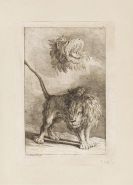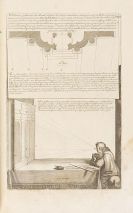
Johann Karl Loth
München
1632 -
Venedig
1698
Born in Munich in 1632, Johann Carl Loth was directed by his father and first teacher, Ulrich Loth, who was painter to the court of Bavaria, to Italian models. Johann Carl Loth continued his studies in Rome and moved to Venice in the 1650. There he came into contact with the avant-garde of his day, including Ruschi, Langetti and Zanchi, whose fondness for strong contrasts of light and shade has caused them to be called the "Tenebrosi".
Loth, whose nom d'artiste was "Carlotto", was a typical Baroque "virtuoso", whose style, which he developed at an early age and remained true to throughout his career, matched his bon vivant lifestyle.
In addition to easel pictures, most of which featured Old Testament motifs, Johann Carl Loth also drew on mythological and historical subject matter. From the mid-1670s he also painted numerous altarpieces for churches in Venice, mainland Italy and his native Bavaria.
Like his fellow "Tenebrosi", Johann Carl Loth only painted figures. Loth's large-scale, monumentally structured compositions, reinforced by a clear and emphatic palette, enabled him to become the most sought-after painter of altarpieces in Venice. His easel pictures developed stylistically from powerful works revealing Strozzi's influence to more elegant renditions. Loth's handling changed from pastose to smoother brushwork and a vibrant, warm palette yielded to lighter, cooler colors.
Even though Loth was faithful to tradition rather than innovative, the influence he exerted on Venetian painting should not be underestimated. Alongside Elsheimer, Liss and Schönfeld, Johann Carl Loth is one of leading 17th-century German painters, whose far-flung sphere of influence extended to pupils from Bavaria, Austria and Bohemia, including Weißenkircher, Rottmayr and Seiter.
Would you like to sell a work by Johann Karl Loth?
Infos for seller





